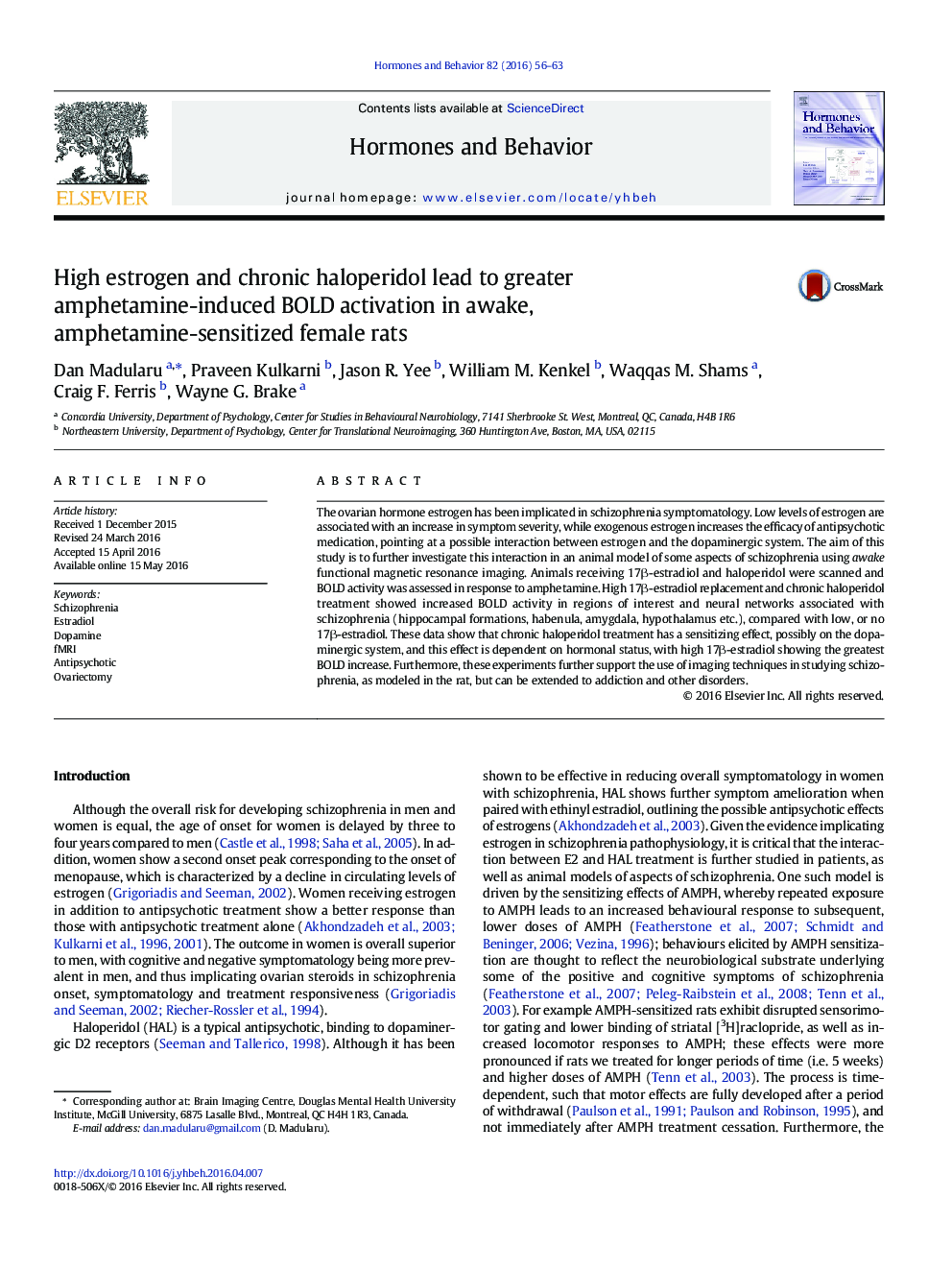| Article ID | Journal | Published Year | Pages | File Type |
|---|---|---|---|---|
| 322675 | Hormones and Behavior | 2016 | 8 Pages |
•Amphetamine increased BOLD activity in awake, amphetamine sensitized rats.•Chronic haloperidol has a sensitizing effect, particularly in rats receiving 17β-estradiol.•Effects of amphetamine, haloperidol and estradiol are global, involving networks affected in schizophrenia.
The ovarian hormone estrogen has been implicated in schizophrenia symptomatology. Low levels of estrogen are associated with an increase in symptom severity, while exogenous estrogen increases the efficacy of antipsychotic medication, pointing at a possible interaction between estrogen and the dopaminergic system. The aim of this study is to further investigate this interaction in an animal model of some aspects of schizophrenia using awake functional magnetic resonance imaging. Animals receiving 17β-estradiol and haloperidol were scanned and BOLD activity was assessed in response to amphetamine. High 17β-estradiol replacement and chronic haloperidol treatment showed increased BOLD activity in regions of interest and neural networks associated with schizophrenia (hippocampal formations, habenula, amygdala, hypothalamus etc.), compared with low, or no 17β-estradiol. These data show that chronic haloperidol treatment has a sensitizing effect, possibly on the dopaminergic system, and this effect is dependent on hormonal status, with high 17β-estradiol showing the greatest BOLD increase. Furthermore, these experiments further support the use of imaging techniques in studying schizophrenia, as modeled in the rat, but can be extended to addiction and other disorders.
